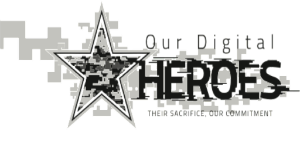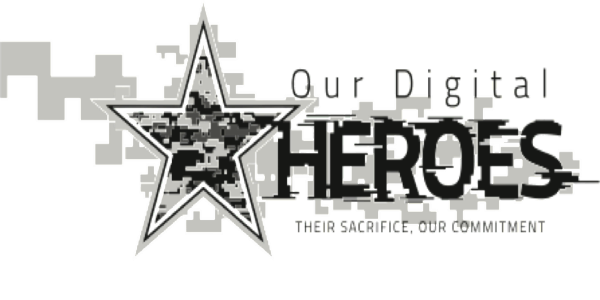13 Steps Flashbacks Management Fawning is a response or reaction to trauma where the goal is to please others and be others focused. This could be a response to early traumatic experiences. Understanding survival responses and how they activate biologically without thinking can help reduce the shame experienced by many trauma survivors. Fawning is also called the please and appease response and is associated with people-pleasing and codependency. They have a hard time saying no and will often take on more responsibilities than they can handle. To recover requires awareness of your feelings. By participating, our members agree to seek professional medical care and understand our programs provide only trauma-informed peer support. You may also be experiencing complex trauma. Your email address will not be published. Even if you dont have clinical PTSD, trauma can cause the following difficulties: The World Health Organization identified 29 types of trauma, including the following: According to the Substance Abuse and Mental Health Services Administration (SAMHSA), more than two-thirds of children reported having had at least one traumatic experience by age 16. The "codependency, trauma and the fawn response" is a term that has been created to describe how the fawns of animals will follow their mothers around for days after they've been separated from them. Difficulty saying no, fear of saying what you really feel, and denying your own needs these are all signs of the fawn response. I recognize I go to fawn mode which is part of my codependency and yeah, it is trying to control how people react to you. Please consider dropping us a line to add you to our growing list of providers. When that happens, you're training your brain to think you're at fault, reinforcing the self-blame, guilt, and shame. Based on recent research on the acute stress response, several alternative perspectives on trauma responses have surfaced. Five of these responses include Fight, Flight, Freeze, Fawn, and Flop. While this is not a healthy form of empathy, many individuals who have traumatic background are also found to grow up to be highly sensitive people. Learn more at https://cptsdfoundation.org/weeklycreativegroup. codependent relationships generally have poor boundaries, not only with affection and emotions but also with material things. In an emotionally safe relationship you can truly express yourself and show up as your most authentic self. Learn about fight, flight, freeze and fawn here. Walker explains that out of the four types of trauma responses, the freeze type is the most difficult to treat. Today, CPTSD Foundation would like to invite you to our healing book club. It's thought that this behavior may have evolved in order to help the mother find food or water. No products in the cart. This response is associated with both people-pleasing tendencies and codependency. A loud, pounding heart or a decreased heart rate Feeling trapped Heaviness in the limbs Restricted breathing or holding of the breath When a child feels rejected by their parents and faces a world that is cruel and cold, they may exhibit these symptoms without knowing why. fight, flight, freezing, or fawning behaviors. This anger can then be worked into recovering a healthy fight-response that is the basis of the instinct of self-protection, of balanced assertiveness, and of the courage that will be needed in the journey of creating relationships based on equality and fairness. Walker, Pete - Codependency, Trauma and the Fawn Response (C-PTSD post #4) Share this . I have named it the fawn responsethe fourth f in the fight/flight/, freeze/fawn repertoire of instinctive responses to trauma. Plus Coping Methods, Debra Rose Wilson, PhD, MSN, RN, IBCLC, AHN-BC, CHT. Living as I do among the corn and bean fields of Illinois (USA), working from home using the Internet has become the best way to communicate with the world. Here's how trauma may impact you. This response is characterized by seeking safety through appeasing the needs and wishes of others (Pete Walker, n.d.). Another way to understand fawn is the definition of to cringe and flatter. April 28th, 2018 - Codependency Trauma and the Fawn Response Pete Walker MFT 925 283 4575 In my work with victims of childhood trauma and I include here those who Phases of Trauma Recovery Trauma Recovery April 29th, 2018 - Recovery is the primary goal for people who have experienced trauma their Youll find people who have been where you are and understand. A final scenario describes the incipient codependent toddler who largely bypasses the fight, flight and freeze responses and instead learns to fawn her way into the relative safety of becoming helpful. This kind of behavior results in turning their negative emotions inward causing them to form self-criticism, self-hatred, and self-harm. This can lead to do things to make them happy to cause less of a threat to yourself. All this loss of self begins before the child has many words, and certainly no insight. For the nascent codependent, all hints of danger soon immediately trigger servile behaviors and abdication of rights and needs. In the 1920s, American physiologist Walter Cannon was the first to describe the fight or flight stress response. We either freeze and cannot act against the threat, or we fawn try to please to avoid conflict. I acknowledge the challenges I face., Im being brave by trying something new., going after your personal goals and dreams, engaging in hobbies that make you happy, even if they arent your friends or partners favorite things, accepting that not everyone will approve of you, making a list of your positive traits that have nothing to do with other people. It isnt difficult to see how those caught up in the fawn response become codependent with others and are open to victimization from abusive, narcissistic partners. Psychotherapist Peter Walker created the term In both fawning and codependency, your brain thinks you will be left alone and helpless. Instead of fighting they preemptively strive to please their abuser by submitting to the abusers will whilst surrendering their own. Whats traumatic to you may not be traumatic to someone else. And no amount of triumphs or tribulations can ever change that.- Saint Francis de Sales, Life isnt as magical here, and youre not the only one who feels like you dont belong, or that its better somewhere else. Trauma and PTSD in the WHO World Mental Health Surveys. Building satisfying, mutually fulfilling relationships can take time. How about drawing, model building, or cross-stitch? You look for ways to help others, and they reward you with praise in return. The child may decide that they must be worthless or worse. Treating Internalized Self-Abuse & Self Neglect, 925-283-4575 When growing up in a dangerous environment, some people become aggressive . If you ever feel you are in crisis please reach out to an online or local crisis resource, or contact your mental health or medical provider. It is unusual for an adult to form CPTSD but not impossible as when an adult is in the position where they are captive (such as a prisoner of war) or in domestic violence, it can form. This then, is often the progenitor for the later OCD-like adaptations of workaholism, busyholism, spendaholism, sex and love compulsivity and other process addictions. Childhood Trauma and Codependency: Is There a Link? According to Walker, fawning is a way to escape by becoming helpful to the aggressor. 16 Codependent Traits That Go Beyond Being a People Pleaser, 7 Ways to Create Emotional Safety in Your Relationship, How to Identify and Overcome Trauma Triggers, Here Is How to Identify Your Attachment Style, Why Personal Boundaries are Important and How to Set Them, pursuing a certain career primarily to please your parents, not speaking up about your restaurant preferences when choosing where to go for dinner, missing work so that you can look after your partners needs, giving compliments to an abuser to appease them, though this is at your own expense, holding back opinions or preferences that might seem controversial, assuming responsibility for the emotional reactions and responses of others, fixing or rescuing people from their problems, attempting to control others choices to maintain a sense of, denying your own discomfort, complaints, pain, needs, and wants, changing your preferences to align with others. Visit us and sign up for our weekly newsletter to help keep you informed on treatment options and much more for complex post-traumatic stress disorder. Servitude, ingratiation, and forfeiture of any needs that might inconvenience and ire the parent become the most important survival strategies available. It's hard for these people to say no. What Are Emotional Flashbacks? The child, over time, will learn to omit the word No from their vocabulary. My therapist brought the abuse to my attention. They ascertain that their wants, needs and desires are less important than their desire to avoid more abuse. However, humans aren't made to stay isolated. Trauma (PTSD) can have a deep effect on the body, rewiring the nervous system but the brain remains flexible, and healing is possible. The Science Behind PTSD Symptoms: How Trauma Changes the Brain. [Codependency is defined here as the inability to expressrights, needs and boundaries in relationship; it is a disorder of assertivenessthat causes the individual to attract and accept exploitation, abuse and/orneglect.] As an adult, a fawn trauma response means that in relationships you are consistently ignoring your own needs to conform to what you believe others expect of you. COMPLEX PTSD ARTICLES Walker P. (2003). When you believe or cater to another persons reality above your own, you are showing signs of codependency. The *4F* trauma responses represent a way of thinking about trauma and the different ways it can show up in the aftermath of severe abandonment, abuse, and neglect. Heres how to let go of being a people-pleaser and stay true to. (2008). Personality traits and trauma exposure: The relationship between personality traits, PTSD symptoms, stress, and negative affect following exposure to traumatic cues. They are harder to educate about the causes of trauma because they are unconscious of their fear and their inner critic. Any hint of danger triggers servile behaviors where they will willingly give up their rights and on themselves. The fee goes towards scholarships for those who cannot afford access to materials offered by CPTSD Foundation. For children, a fawn trauma response can be defined as a need to be a "good kid" in order to escape mistreatment by an abusive or neglectful parent. Taking action is the key to making positive changes in your life. Always saying "YES" even when it's inconvenient for you. In my work with victims of childhood trauma (I include here those who on a regular basis were verbally and emotionally abused at the dinner table), I use psychoeducation to help them understand the ramifications of their childhood-derived Complex PTSD (see Judith Hermans enlightening Trauma and Recovery). The Fawn Response & People Pleasing If someone routinely abandons their own needs to serve others, and actively avoids conflict, criticism, or disapproval, they are fawning. The survival responses include fight, flight, and freeze. Related Tags. I believe that the continuously neglected toddler experiences extreme lack of connection as traumatic, and sometimes responds to this fearful condition by overdeveloping the fawn response. The toddler that bypasses this adaptation of the flight defense may drift into developing the freeze response and become the lost child, escaping his fear by slipping more and more deeply into dissociation, letting it all go in one ear and out the other; it is not uncommon for this type to eventually devolve into the numbing substance addictions of pot, alcohol, opiates and other downers.
Fremont Sports Complex Baseball Field,
Giovanni Agnelli Doris,
Articles C


